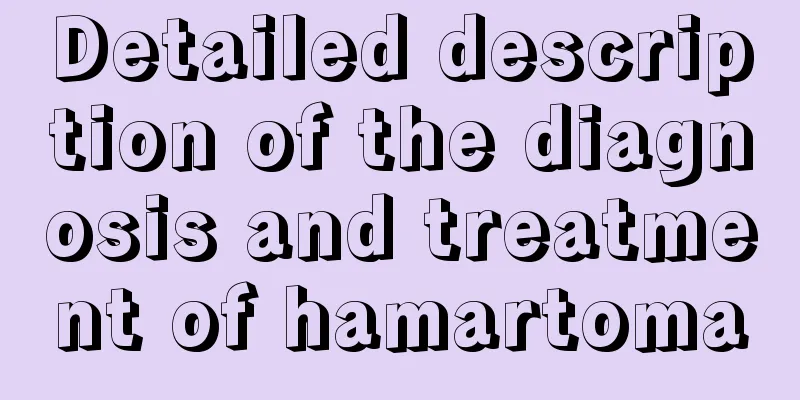Treatment methods for acute cerebral infarction

|
In fact, I believe everyone is very familiar with the disease of cerebral infarction. We often hear about this disease in life, and many people are very afraid of this disease and are deterred from it. Let us learn about the treatment methods of the acute stage of cerebral infarction. Treatment: 1. The treatment principles of acute cerebral infarction are: ① Comprehensive treatment and individualized treatment: At different times of the disease development, targeted comprehensive treatment and individualized treatment measures are taken for different conditions and causes. ② Actively improve and restore blood supply to the ischemic area, promote cerebral microcirculation, block and terminate the pathological process of cerebral infarction. ③Prevent and treat ischemic cerebral edema. ④ Brain cell protection treatment should be used early in the acute phase, and comprehensive measures can be taken to protect the brain tissue in the penumbra surrounding the ischemia to avoid worsening of the disease. ⑤ Strengthen nursing care and prevention of complications, eliminate pathogenic factors, and prevent recurrence of cerebral infarction. ⑥ Actively carry out early and standardized rehabilitation treatment to reduce the disability rate. ⑦ Others: It is best not to use glucose liquid within 12 hours after onset of the disease. Hydroxyethyl starch (706 generation plasma) or Ringer's solution plus adenosine triphosphate (ATP), coenzyme A and vitamin C can be used to avoid using high-sugar liquids in the acute phase to aggravate acidosis and brain damage. 2. General treatment in the acute phase: During the acute phase, patients should rest in bed as much as possible and strengthen care of their skin, oral cavity, respiratory tract, and urination and defecation. Pay attention to the balance of water and electrolytes. If the patient is still unable to eat on his own 48 to 72 hours after onset, he should be given nasogastric liquid diet to ensure nutritional supply. The patient's daily care, diet, and treatment of other complications should be given priority. In addition, most patients, their relatives and friends, and some medical staff expect better medicines to help patients recover soon, while neglecting other aspects of treatment, such as the patient's diet. Since some patients with cerebral infarction cannot take care of themselves and even have difficulty swallowing during the acute phase, if they are not given proper nutrition, energy metabolism problems will quickly arise. At this time, even if the treatment medication is good, it is difficult to achieve good treatment results. 3. Treatment of cerebral edema (1) Mannitol: 20% mannitol hypertonic solution is commonly used in clinical practice. Mannitol is one of the most commonly used and effective dehydrating agents. When the cerebral infarction is large or accompanied by bleeding, there is often brain edema around the lesion. In recent years, it has been found that mannitol also has a strong free radical scavenging effect. Depending on the condition of the patient, 125-250 ml of 20% mannitol is selected and quickly injected intravenously once every 6-8 hours. The speed of intravenous drip should be fast, and intravenous push injection is best. It is required to inject 250 ml of 20% mannitol within 15-30 minutes. If it is too slow, it will not have the effect of reducing intracranial pressure. The dosage of mannitol should not be too large, generally controlled below 1000ml/d. For elderly patients or patients with poor renal function, it should be controlled below 750ml/d and administered in 4 to 6 doses. Generally, the dosage should be reduced after 3 to 5 days of application, and the appropriate usage time is 7 to 10 days. In recent years, most scholars believe that, in addition to being used to rescue brain herniation, rapid small-dose infusion (125 ml) can achieve similar effects to a single large-dose infusion. During the use of mannitol, the patient's renal function changes should be closely monitored, and attention should be paid to monitoring changes in water and electrolytes. (2) 10% glycerol fructose: It can produce pharmacological effects through hypertonic dehydration. It can also utilize the energy generated by glycerol metabolism and enter the brain metabolism process to improve local metabolism. Through the above effects, it can reduce intracranial pressure and intraocular pressure, eliminate cerebral edema, increase cerebral blood volume and cerebral oxygen consumption, and improve brain metabolism. The above article gives you a detailed introduction to the treatment methods of the acute stage of cerebral infarction. I believe everyone has a relatively preliminary understanding. In fact, in daily life, you still need to do regular physical examinations so that you can know your physical condition at the first time. |
<<: Things to note about the sequelae of prosthetic chin
>>: What are the nutritional values of boiled peanuts
Recommend
How to remove the dyed PU leather
PU is a kind of fabric similar to leather. To put...
What is the contrast of the exposed nostrils of a normal nose
In life, many people have large nostrils, and som...
What to do if baby doesn't like taking a nap
It is very beneficial to let your baby develop th...
How long can you live with endometrial cancer
Cancer, like a devil, has been eroding women'...
Be careful of poisoning if this thing at home breaks
Nowadays, many families with children have thermo...
There is a bag outside the upper eyelid
Clinically, the symptoms of many diseases occur i...
Is stage fright a factor? Adjust your mindset to prevent stage fright
At work and in life, we face all kinds of people ...
Do's and Don'ts of Salt Pack Hot Compress
The edible salt that often appears in the kitchen...
What is the concept of functional food?
Functional food is also called health food. It is...
Are plastic lunch boxes toxic?
As people in modern society are under increasing ...
Effects of tea polyphenols in tea
Tea ceremony is one of the traditional Chinese cu...
Will nosebleeds occur in late stage brain cancer?
A small number of intracranial tumors can cause n...
What foods can help white hair turn black?
Having white hair on your head is not necessarily...
Correct first aid measures for scalds and burns
Scalds and burns are common occurrences in daily ...
What symptoms should you be alert to when women have breast tumors?
According to statistics from authoritative depart...









